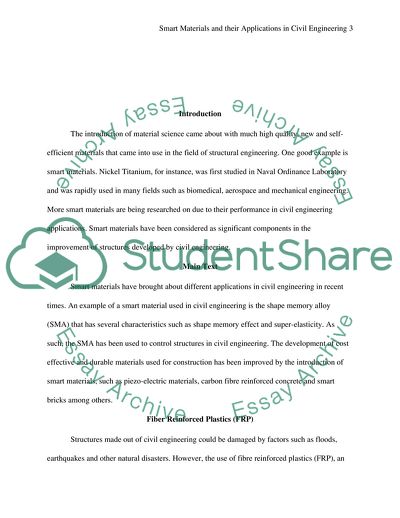Cite this document
(Smart Materials and Their Applications in Civil Engineering Coursework Example | Topics and Well Written Essays - 1750 words, n.d.)
Smart Materials and Their Applications in Civil Engineering Coursework Example | Topics and Well Written Essays - 1750 words. https://studentshare.org/engineering-and-construction/1874873-smart-materials-and-their-applications-in-civil-engineering
Smart Materials and Their Applications in Civil Engineering Coursework Example | Topics and Well Written Essays - 1750 words. https://studentshare.org/engineering-and-construction/1874873-smart-materials-and-their-applications-in-civil-engineering
(Smart Materials and Their Applications in Civil Engineering Coursework Example | Topics and Well Written Essays - 1750 Words)
Smart Materials and Their Applications in Civil Engineering Coursework Example | Topics and Well Written Essays - 1750 Words. https://studentshare.org/engineering-and-construction/1874873-smart-materials-and-their-applications-in-civil-engineering.
Smart Materials and Their Applications in Civil Engineering Coursework Example | Topics and Well Written Essays - 1750 Words. https://studentshare.org/engineering-and-construction/1874873-smart-materials-and-their-applications-in-civil-engineering.
“Smart Materials and Their Applications in Civil Engineering Coursework Example | Topics and Well Written Essays - 1750 Words”. https://studentshare.org/engineering-and-construction/1874873-smart-materials-and-their-applications-in-civil-engineering.


